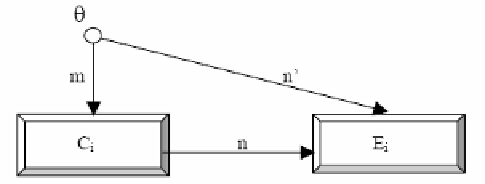Information Technology Reference
In-Depth Information
Fig. 1.
Combining regulative superposition and refinement morphisms
2 CommUnity and Extension Morophisms
It has been shown in [5] that higher-order connectors provide a very convenient basis
for enhancing the behavior of an architecture of component designs, by the superim-
position of aspects, such as fault tolerance, security, monitoring, compression, etc.
Owing to the coordination mechanism of CommUnity, which externalizes completely
the definition of interaction between components, the coupling between the compo-
nents has been reduced to a minimum so that we can superimpose aspects on existing
systems through replacement, superposition and refinement of components. However,
higher-order connectors are not powerful enough for defining various kinds of as-
pects, because some of them require
extensions
of the components and connectors [8],
which break encapsulation of the extended component, though in a controlled and
predictable way. (The usual relationships used in CommUnity, i.e., regulative super-
position and refinement, preserve encapsulation: channels (attributes) of the original
component are not modified by new actions of the new component and actions of the
original component can only have their enabling guards and effects strengthened in
the new component.) Hence, we defined an extension morphism as a mechanism for
modifying/adapting components, in a way that satisfies the notion of substitutability
arising in the context of object oriented design and programming [8], enables us to
predict properties of extended components in a safe manner and enables the design of
various aspects [8].
This means that in a well-formed configuration diagram we should be able to re-
place component C by its valid extension, component C', and preserve the well form-
edness (our ability to compute the colimit) of the diagram. We prove this property in
the next section. To illustrate the application of this principle in designing systems
with the CommUnity language, a vending machine system example will be discussed
below to show how we can combine regulative superpositions with extension mor-
phims to derive an “augmented” version of the original system, where the modified
system is not simply a refinement of the original, nor is it a regulated version of the
original obtained by the use of regulative superpositions (the usual structuring rela-
tionship in CommUnity).
2.1 Combining Regulative Superpositions with Extension Morphisms
In this section we will consider the case where, in a well-formed configuration dia-
gram, one component is extended by a design through an extension morphism. Since

Search WWH ::

Custom Search